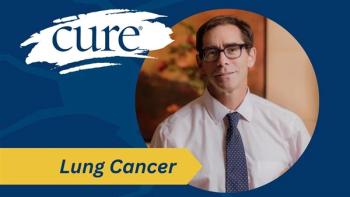
AI Tools Speed Prostate Cancer Decisions With Faster Results
FDA-authorized AI tools have the potential to help patients with prostate cancer get clearer answers instead of waiting weeks for genomic test results.
FDA-authorized artificial intelligence (AI) tools have the potential to help patients with prostate cancer get clearer answers faster, according to Dr. Adam Cole. Instead of waiting weeks for genomic test results, AI can provide reliable reports within one to three days.
Cole sat down for an interview with CURE to discuss how these tools are giving doctors and patients more confidence in whether treatment or active surveillance is the best path forward for prostate cancer.
Cole is a board-certified pathologist with a focus in genitourinary and molecular. He is the founder and CEO of TruCore Pathology in Arlington, Texas.
Transcript
How do FDA-authorized AI tools improve upon the traditional way physicians make treatment decisions for prostate cancer?
Because we know many of these patients would benefit from active surveillance and don't necessarily need treatment, another industry has emerged: genomics. These tests are more expensive, and they take the tissue, cut through it, harvest the tumor's RNA, and then interrogate it for mutations to determine whether the tumor is more or less aggressive. This is what we've had up to this point, and it's good; it's a better molecular safety net than just a pathologist's opinion alone.
The problem with that is that from day one, when a patient walks in to get a prostate biopsy, they're nervous. In two, three or four days, however long it takes for the pathology report to come back, they might get a report that says "cancer" or "no cancer." But there's still a big question mark: did the pathologist get it right based on the tiny piece of tissue we sent them?
So, there are many times when the urologist will say, “Let's augment that with one of these genomic tests.” Now, they're expensive, and there are two major downsides. I'll send the tissue to one of these different labs, and it will take anywhere from 10 to 20 days to get that report back, which will say, “Based on a genetic and genomic level, we favor active surveillance,” or “We think the patient needs to be treated.” Those are long days for a patient to sit and wonder, [what route treatment will take].
I know all the worries that go into that. “Am I going to get radiation and the other multi-modal therapies that go with that, or am I going to be OK?” I can only imagine those sleepless nights. I am passionate about expediting the turnaround time and giving the patient a clear path forward; either we're going to go all-in and treat it, or we're going to put this to rest and say we feel like we can watch it, and then we start that treatment algorithm.
If I diagnose it, we can usually get that report back to the urologist within 48 to 72 hours from the day of the biopsy. With an Artera AI, there is no delay. I can order the test, working collaboratively with the urologist, and they can look at the images we've scanned. We can get a report back within 12 to 24 hours. Honestly, it's generally back well before the patient returns for their initial post-biopsy consultation.
That makes for a much more robust conversation between the urologist and the patient. They can say, “We found cancer. That being said, the pathologist thinks this looks OK, and just so you know, we've backed that up with a purely objective, artificial intelligence-based prognosis, and it says the same thing. No one is seeing anything concerning. So, at this juncture, it's not ideal that you have cancer, but so many men get this prostate cancer diagnosis, and we feel confident in our ability to watch this. Now, here's what that looks like moving forward.”
Alternatively, they might say, “Unfortunately, you've got cancer. The pathologist thought it might be OK for us to watch this, but we've augmented that with an artificial intelligence assessment. It's looked at all of these outcomes, and unfortunately, it's suggesting that we need to go ahead and treat this. Let's start that conversation.”
To me, if I were the patient, that's where I'd want to be. I don't want built-in, unnecessary delays upfront when it comes to identifying which path I'm going to be on.
This transcript has been edited for clarity and conciseness.
For more news on cancer updates, research and education, don’t forget to





